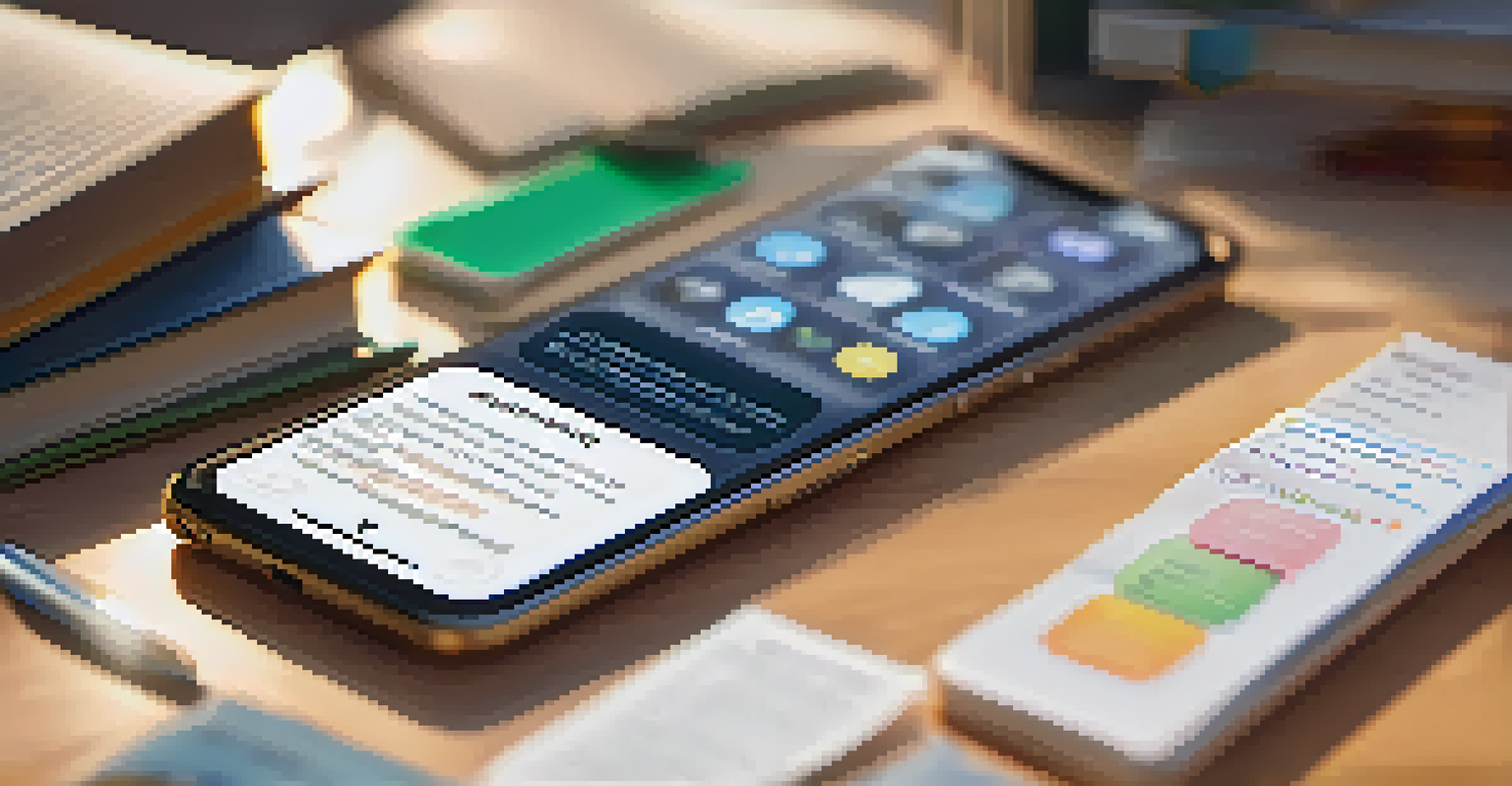The Connection Between Microlearning and Self-Directed Learning

Understanding Microlearning and Its Benefits
Microlearning is an educational approach that delivers content in short, focused segments. Think of it as snack-sized information that’s easy to digest and retain. This method caters to our busy lifestyles, allowing learners to engage with material at their own pace and on their own schedule.
Tell me and I forget, teach me and I remember, involve me and I learn.
The benefits of microlearning are numerous, including increased retention rates and enhanced engagement. For example, a quick video or a brief article can be more impactful than a lengthy lecture. This is especially true in a world where our attention spans seem to dwindle daily.
Moreover, microlearning supports various learning styles, making it a versatile tool. Whether someone learns best through visuals, reading, or hands-on experiences, microcontent can cater to those preferences, ensuring a more personalized learning journey.
What is Self-Directed Learning?
Self-directed learning (SDL) is an educational process where individuals take the initiative in their learning. Instead of relying solely on a teacher or a structured program, learners identify their own goals, resources, and paths. This approach empowers individuals to take charge of their learning experience.

A classic example of self-directed learning is someone who decides to learn a new language using online resources. They set their own goals, choose the materials they find most effective, and progress at their own pace. This autonomy can lead to greater motivation and satisfaction in learning.
Microlearning Enhances Retention
Microlearning delivers content in short, focused segments, making it easier for learners to engage and retain information.
SDL fosters critical thinking and problem-solving skills, as individuals learn to assess their needs and seek out solutions. This reflective practice encourages a deeper understanding of the subject matter, as learners are actively involved in their educational journey.
The Synergy Between Microlearning and Self-Directed Learning
The connection between microlearning and self-directed learning is powerful and transformative. Microlearning provides the bite-sized content that supports the autonomous nature of SDL, making learning more manageable. This synergy encourages learners to take control, feeding their curiosity without overwhelming them.
The only person who is educated is the one who has learned how to learn and change.
For instance, learners can use microlearning resources to explore topics of interest on their own terms. They can dive into specific subjects or skills, all while leveraging the flexibility that microlearning offers. This targeted approach aligns perfectly with the goals of self-directed learners, who seek relevant and timely information.
Additionally, the immediate accessibility of microlearning content means that learners can quickly fill knowledge gaps as they arise. This adaptability enhances the self-directed learning process, allowing individuals to stay relevant and informed in an ever-changing world.
Practical Applications of Microlearning in SDL
Incorporating microlearning into self-directed learning can be simple and effective. For example, learners can utilize mobile apps that offer quick lessons on various subjects, making it easy to learn on the go. This convenience aligns with the fast-paced lifestyles of many individuals today.
Many professionals use microlearning platforms to master new skills relevant to their careers. Short tutorials or infographics can help them grasp complicated concepts in just a few minutes, allowing them to apply what they've learned immediately in the workplace. This practical application enhances both confidence and competence.
Self-Directed Learning Empowers Learners
Self-directed learning allows individuals to take charge of their educational journey, setting their own goals and choosing resources.
Furthermore, learners can create their own microlearning content, like flashcards or summary notes, tailored to their specific needs. This active involvement in content creation engages learners even more, solidifying their understanding and promoting a sense of ownership over their learning.
Challenges in Implementing Microlearning for SDL
While the benefits of microlearning in self-directed learning are clear, challenges do exist. One potential issue is the risk of information overload; with so many microcontent options available, learners might struggle to find the most relevant materials. This can lead to frustration instead of empowerment.
Another challenge is maintaining motivation and discipline. Without a structured environment, some learners may find it difficult to stay accountable to their self-directed learning goals. This is where setting clear objectives and creating a learning schedule can help keep individuals on track.
Lastly, not all microlearning resources are created equal. The quality of content can vary widely, making it essential for learners to critically evaluate the materials they choose. Reliable sources and well-crafted microcontent can significantly enhance the SDL experience.
The Future of Microlearning in Education
The future of microlearning looks bright, especially in the context of self-directed learning. As technology continues to evolve, the opportunities for personalized, bite-sized content will expand. This evolution will likely lead to even more innovative ways to engage learners and foster independent exploration.
With the rise of artificial intelligence and adaptive learning technologies, microlearning can become even more tailored to individual needs. Imagine a system that curates content based on your learning habits and preferences, making the self-directed learning experience seamless and efficient.
Synergy Boosts Learning Effectiveness
The combination of microlearning and self-directed learning creates a flexible and engaging framework that promotes lifelong learning.
As educational institutions and organizations recognize the value of microlearning, we can expect to see it integrated into various learning environments. This shift will promote a culture of continuous learning, where individuals feel empowered to pursue knowledge at their own pace and in their own way.
Conclusion: Embracing Microlearning for Lifelong Learning
In conclusion, the connection between microlearning and self-directed learning is not just a trend; it's a vital part of modern education. By embracing microlearning, learners can take control of their educational journeys, making the process both enjoyable and effective. This approach nurtures a culture of lifelong learning, essential in today's rapidly changing world.
As you explore your own learning opportunities, consider how microlearning can fit into your self-directed path. Whether it's watching a short video during your lunch break or reading a quick article on a topic of interest, every little bit counts. Each microlearning moment can pave the way for deeper understanding and mastery.

Ultimately, the combination of microlearning and self-directed learning creates an empowering framework. It encourages curiosity, fosters independence, and equips learners with the skills they need to thrive in their personal and professional lives.